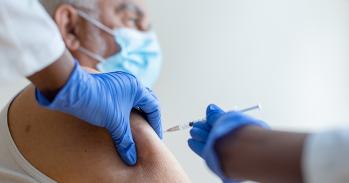
Almost one and a half billion spending transactions reveal 'real-time' reactions of consumers in a major western economy during the nation’s peak pandemic period.
Almost one and a half billion spending transactions reveal 'real-time' reactions of consumers in a major western economy during the nation’s peak pandemic period.
Within a big city, inequality in disease burden appears to be linked to inequality in economic burden
Vasco Carvalho
A new analysis of 1.4 billion anonymised credit and debit card transactions during the first three months of 2020 shows that spending in Spain post-lockdown was an average of 49% lower than the same period the previous year.
Economists from the universities of Cambridge, Edinburgh and Imperial College in the UK worked with the Spanish bank BBVA, one of the largest financial institutions in the world, to study the 'real-time evolution' of economic activity during the COVID-19 pandemic.
“This is an unprecedented dataset of millions of everyday transactions, revealing the underlying costs of the coronavirus crisis,” said study co-author Vasco Carvalho, Professor of Macroeconomics at the University of Cambridge, and director of its INET Institute.
“We can see in high resolution the impact of extreme mobility restrictions on a major western economy. We find an abrupt and persistent decline in spending during lockdown, amounting to about half of what we might normally expect.”
The researchers found evidence of a major spending increase in the few days just before Spain’s lockdown began on the 14 March 2020, when daily expenditure growth shot up by 20 percentage points above average for the year.
Once lockdown began, daily spending halved on average. The researchers say that, while bank transaction data is 'substantially more volatile' than overall consumption by households in Spain, they are closely linked.
As such, a 'back-of-the-envelope calculation' for consumption movement during the pandemic suggests growth of just over 4% prior to lockdown dropped sharply to a -13% decline in average household consumption – a key indicator of GDP – once lockdown restrictions were in place.
“While considerable uncertainty surrounds these calculations, is seems hard to construct a scenario where average consumption of Spanish households is not declining somewhere between minus 10% and minus 15% during the period of lockdown,” said Carvalho.
The dataset charts the dramatic shift to online purchasing once lockdown was enforced. While both offline and online spending fell overall, the decline at physical points of sale was massive. As such, online shopping increased its market share by about 50%.
The detail in the anonymised transaction data allowed the researchers to analyse the best and worst performing types of goods and outlets as people adapted to their new lockdown lives.
While outlets unable to conduct business were obviously the worst hit – from bars to fashion retailers – the study shows that small local food shops and convenience stores benefited the most, increasing their market share more than even the 'Hipermercados', or superstores.
Other categories of spending that have seen market share grow during Spanish lockdown include mobile phone credit, as telecommunications become even more vital to social lives, as well as pharmacies and insurance.
“Spending on commodities related to basic necessities, such as foodstuffs and the pharmacy, more than doubled during the lockdown period, while trade in fashion or personal services declined heavily,” said Carvalho. “Restrictions to movement mean proximity to the customer is now of key importance.”
The study found that – all together – the top 10 best performing spending categories during lockdown went from an average of 10% market share in the first two months of 2020 to 50% by late March.
The economists also used anonymised geo-tagging of the transactions to study the economic effects of coronavirus on the different regions of Spain, as well as among the neighborhoods of one of its major cities.
Unlike the country’s autonomous regions, which all followed a similar pattern, economic activity evolved very differently within Madrid’s postcodes during the crisis. “Those neighborhoods where there were more sick and infected people saw substantial declines in spending,” said Carvalho.
“Within a big city, inequality in disease burden appears to be linked to inequality in economic burden.”
Study co-author Professor Sevi Rodriguez Mora, of the University of Edinburgh’s School of Economics, said: “Over the coming weeks governments will grapple with how to relax social distancing measures, but have few means of understanding the impact of different policies on economic activity.
“Transaction data can provide immediate feedback on how spending patterns across space and sectors react to restriction measures, but also their relaxation.”
“Given that this seems to be happening in Spain before the rest of Europe and America, whatever happens in Spain will show us what we should expect everywhere else."
Álvaro Ortiz, Head of Big Data at BBVA Research, added: “Tracking these kind of events in real time and high definition provides an important strategic advantage for policy makers, as they can react more quickly to limit the economic damage.”
The new research is published as a Cambridge-INET working paper on the Institute’s dedicated COVID-19 research page.
How you can support Cambridge's COVID-19 research effort
Donate to support COVID-19 research at Cambridge

The text in this work is licensed under a Creative Commons Attribution 4.0 International License. Images, including our videos, are Copyright ©University of Cambridge and licensors/contributors as identified. All rights reserved. We make our image and video content available in a number of ways – as here, on our main website under its Terms and conditions, and on a range of channels including social media that permit your use and sharing of our content under their respective Terms.




